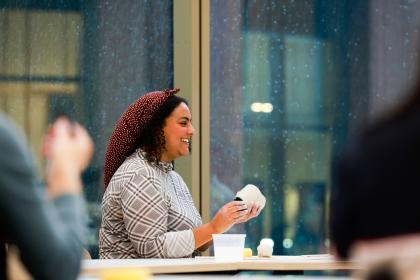Davies C, et al (2015) The art of being mentally healthy. BMC Public Health 16(15) doi: 10.1186/s12889-015-2672-7.
Australia Council for the Arts 2015, Arts Nation: An Overview of Australian Arts, 2015 Edition, Sydney, Australia.
Fanian S, Young S, Mantla M, Daniels A, Chatwood S. Evaluation of the Kòts'iìhtła ("We Light the Fire") Project: building resiliency and connections through strengths-based creative arts programming for Indigenous youth. Int J Circumpolar Health. 2015;74:27672. doi: 10.3402/ijch.v74.27672
Davies C & Pescud M (2020) The arts and creative industries in health promotion, see: www.vichealth.vic.gov.au.
Daykin, N., & Joss, T. (2016). Arts for health and wellbeing: An evaluation framework . London: Public Health England.
Perkins, R., Mason-Bertrand, A., Tymoszuk, U. et al. Arts engagement supports social connectedness in adulthood: findings from the HEartS Survey. BMC Public Health 21, 1208 (2021). https://doi.org/10.1186/s12889-021-11233-6
Daykin N, Mansfield L, Meads C, Julier, G, Tomlinson, A, Payne, A, Grigsby, L, Grigsby Duffy, Lane, J, D’Innocenzo, L, Burnett, A, Kay, T, Dolan, P, Testoni, S and Victor, C et al. What works for wellbeing? A systematic review of wellbeing outcomes for music and singing in adults. Perspectives in Public Health. 2018;138(1):39-46. doi:10.1177/1757913917740391
Mansfield L, Kay T, Meads C, Grigsby-Duffy L, Lane J, John A, et al. Sport and dance interventions for healthy young people (15-24 years) to promote subjective well-being: a systematic review. BMJ Open. 2018;15(8):e020959. doi: 10.1136/bmjopen-2017-020959
Martin L, Oepen R, Bauer K, Nottensteiner A, Mergheim K, Gruber H, et al. Creative Arts Interventions for Stress Management and Prevention-A Systematic Review. Behavoral Sciences. 2018;8(2):22. doi: 10.3390/bs8020028.
Sandmire D, Rankin N, Gorham S, Eggleston D, French C, Lodge E, et al. Psychological and autonomic effects of art making in college-aged students. Anxiety Stress Coping. 2016;29(5):561-9. doi: 10.1080/10615806.2015.1076798.
Fielding, Kate, Iva Glisic and Jodie-Lee Trembath. November 2019. Transformative: Impacts of Culture and Creativity. Produced by A New Approach (ANA) think tank with lead delivery partner the Australian Academy of the Humanities. Canberra.
